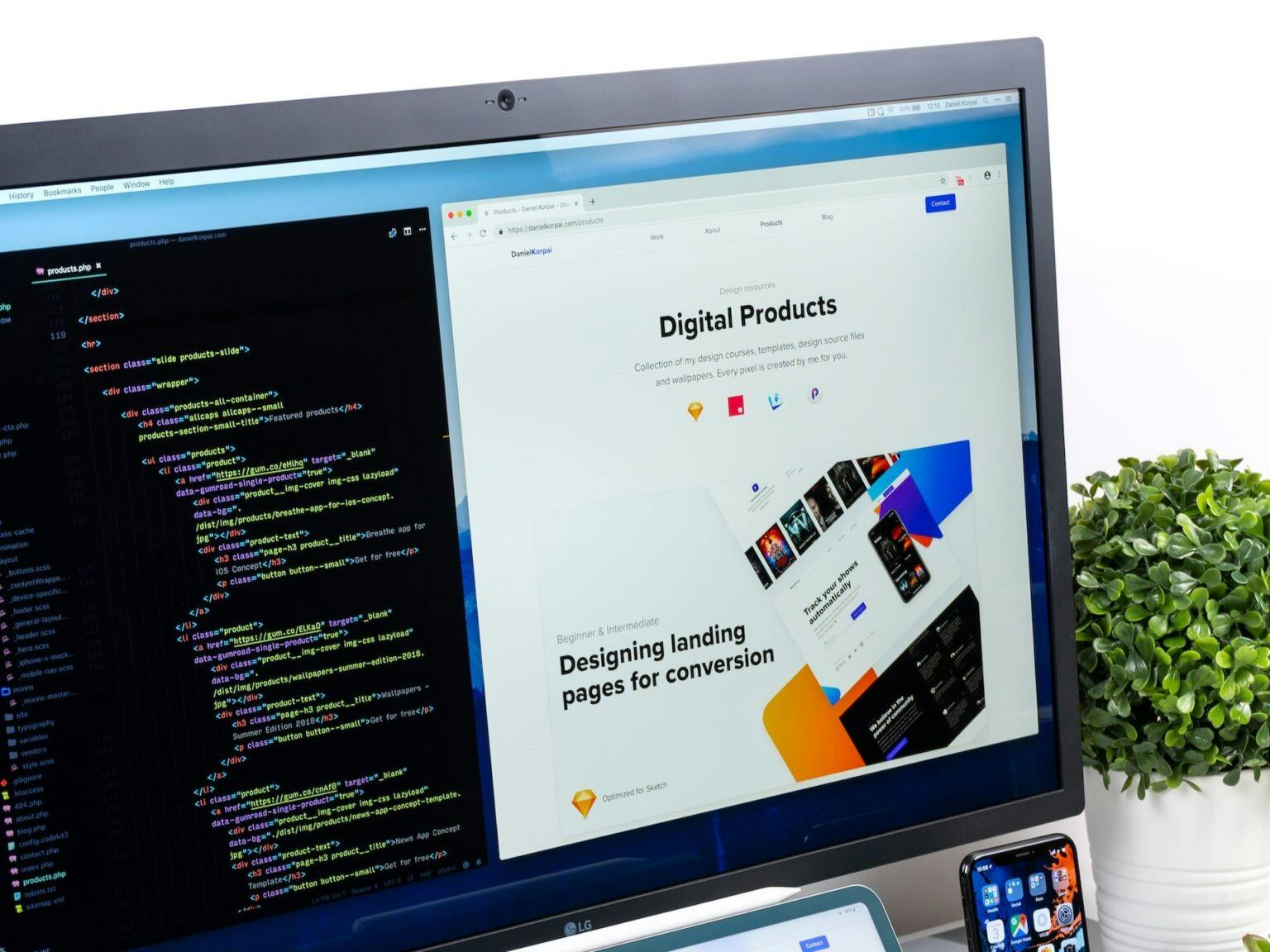The Future of Websites: Navigating Web 3.0 with Headless CMS
Published March 18, 2024 by Devin Jackson
Since its inception, the internet has undergone remarkable transformations, evolving from static Web 1.0 pages to the dynamic and interactive Web 2.0 era. With the imminent arrival of Web 3.0, a new paradigm shift is on the horizon, promising to redefine digital interactions and reshape the future of websites. This article delves into Web 3.0 and its potential impact on website internet trends. We’ll explore why staying abreast of technological advancements is crucial for website development in today’s fast-paced digital landscape.
Understanding Web 3.0
Web 3.0 heralds the next chapter in the internet’s evolution, poised to reshape digital interactions and data ownership. Unlike its predecessors, Web 1.0 and Web 2.0, which laid the groundwork for static webpages and user-generated content, Web 3.0 introduces decentralized services and peer-to-peer interactions, leveraging distributed systems, blockchain technology, and semantic web principles.
In essence, Web 3.0 signifies a departure from the centralized nature of previous iterations, envisioning a metaverse where services are distributed and data storage is decentralized. This paradigm shift brings various advanced features, including 3D graphics, the Semantic Web, artificial intelligence, and ubiquitous connectivity. These technological advancements enable more immersive experiences, deeper data comprehension, and seamless integration across devices and platforms.

The implications of Web 3.0 extend beyond technological innovation, profoundly impacting businesses and society. It offers opportunities for enhanced data ownership, decentralized governance, and the emergence of innovative applications across various industries.
Real-world examples of Web 3.0 applications, from decentralized social networks and blockchain-based marketplaces to AI-driven virtual assistants, illustrate these principles. These platforms exemplify the transformative potential of Web 3.0, reshaping digital interactions and data management in profound ways.
Understanding the fundamentals of Web 3.0 is pivotal in comprehending its influence on internet trends for websites. Moreover, it underscores the growing importance of adopting headless CMS in navigating this evolving digital landscape.
Impact on Website Development
Web 3.0 is reshaping website development practices, exerting a profound influence on internet trends and prompting the widespread adoption of headless CMS. Several vital factors characterize this paradigm shift in website development.
First and foremost, Web 3.0 champions decentralization and peer-to-peer networks, fundamentally altering the architecture of websites. In this new era, traditional monolithic CMS platforms are replaced by headless CMS, enabling developers to embrace distributed architectures that offer unparalleled flexibility and scalability.
Moreover, websites in the Web 3.0 era integrate advanced technologies such as blockchain, artificial intelligence, and 3D graphics. These cutting-edge technologies are harnessed to create immersive experiences, fortify data security, and optimize content delivery, ensuring that websites remain at the forefront of innovation.
The Semantic Web is central to the ethos of Web 3.0, which facilitates enhanced data understanding and connectivity. Websites leverage semantic metadata to deliver personalized content and streamline navigation, improving user engagement and satisfaction.

In the face of a rapidly evolving digital landscape, websites must demonstrate flexibility and adaptability. Headless CMS emerges as a crucial enabler of agility by decoupling content management from presentation. This separation empowers developers to iterate rapidly and integrate new features seamlessly, ensuring that websites remain responsive to changing technologies and user preferences.
Furthermore, Web 3.0 promotes the adoption of composable architectures, where websites are constructed using modular components that can be easily assembled and reconfigured. Headless CMS facilitates composable website development, allowing teams to select the most suitable tools and technologies for their specific requirements.
As Web 3.0 redefines website development practices, embracing headless CMS becomes imperative for organizations striving to stay abreast of internet trends and deliver exceptional digital experiences to their audiences. By adopting this transformative approach to website development, organizations can position themselves at the vanguard of innovation in the digital realm.
The Role of Headless CMS in Web 3.0
In the transition to Web 3.0, Headless CMS emerges as a pivotal component, crucial in developing dynamic and immersive websites. Its significance within the Web 3.0 landscape is multifaceted, encompassing several vital aspects.
Foremost, Headless CMS facilitates decoupling content from presentation, liberating developers from the constraints of traditional monolithic architectures. By separating content management from the presentation layer, Headless CMS empowers developers to craft content-rich websites with unparalleled flexibility and agility. This decoupling fosters innovation and adaptability in website development, enabling organizations to respond swiftly to evolving market demands.
Furthermore, in the decentralized environment of Web 3.0, Headless CMS provides essential support for distributed architectures. This capability allows content to be stored and delivered from multiple sources, ensuring scalability, redundancy, and resilience in the face of increased user interactions and traffic. By embracing Headless CMS, organizations can architect their websites to withstand the challenges posed by the decentralized nature of Web 3.0, thereby ensuring uninterrupted service delivery to their audiences.
Moreover, Headless CMS integrates with advanced technologies such as blockchain, artificial intelligence, and augmented reality, empowering developers to harness these innovations in their websites. This integration facilitates the creation of immersive experiences and enhances data security and personalization capabilities, elevating the overall quality of digital interactions.
Additionally, Headless CMS facilitates the adoption of composable architectures, enabling developers to assemble websites from modular components tailored to specific business needs. This approach fosters agility and scalability, allowing organizations to swiftly adapt to changing market conditions and integrate new features seamlessly into their websites.
Lastly, Headless CMS enables cross-platform content delivery, ensuring that content is delivered seamlessly across multiple channels and devices. From websites and mobile apps to IoT devices and emerging platforms, Headless CMS ensures consistent branding and user experience across diverse digital touchpoints, thereby enhancing engagement and fostering customer loyalty.
As Web 3.0 continues to evolve, Headless CMS emerges as a foundational technology that empowers organizations to embrace decentralization, integrate advanced technologies, and deliver dynamic digital experiences. By adopting Headless CMS, businesses can position themselves at the forefront of internet trends and meet the evolving needs of their audiences in the Web 3.0 era.
Considerations for Implementation
Implementing a headless CMS for Web 3.0 requires careful consideration of various factors to ensure its effectiveness and success. Here are the key considerations to keep in mind:
- Scalability and Performance: Choose a headless CMS that can scale seamlessly to handle increasing volumes of content and user interactions. Ensure that it offers robust performance capabilities to deliver content rapidly and reliably, even under high traffic loads.
- Flexibility and Customization: Look for a headless CMS that provides flexibility and customization options to meet your business requirements. It should support a wide range of content types, workflows, and integrations, allowing you to tailor the system to your unique needs.
- Interoperability and Integration: Evaluate the headless CMS’s ability to integrate with other systems and technologies, such as e-commerce platforms, CRM systems, and third-party APIs. Seamless integration is essential for creating cohesive digital experiences and leveraging the full potential of Web 3.0 technologies.
- Developer-Friendly Features: Consider the headless CMS’s developer-friendliness, including its developer tools, documentation, and support for modern development frameworks and languages. A user-friendly interface and comprehensive documentation can streamline the development process and accelerate time to market.
- Security and Compliance: Prioritize security and compliance features when selecting a headless CMS, especially in Web 3.0’s decentralized and distributed architecture. Ensure that the CMS offers robust security measures, such as data encryption, access controls, and industry standards and regulations compliance.
- Cost and Total Ownership: Evaluate the headless CMS’s total cost of ownership (TCO), considering factors such as licensing fees, implementation costs, ongoing maintenance, and scalability. Choose a solution that provides value for money and aligns with your budget and long-term strategic goals.
- User Experience and Accessibility: Focus on the headless CMS’s user experience and accessibility aspects, ensuring that it offers intuitive content authoring tools and responsive design capabilities. Accessibility features are essential for reaching a diverse audience and complying with accessibility standards.
By considering these factors during implementation, organizations can effectively leverage headless CMS to power their websites in the Web 3.0 era. With the right approach, organizations can unlock the full potential of headless CMS and deliver dynamic, immersive digital experiences that resonate with their audiences.

Conclusion
As the internet evolves into the Web 3.0 era, website development undergoes a paradigm shift driven by decentralization, interoperability, and user-centric experiences. Headless CMS emerges as a core aspect of website development in this transformative landscape, offering flexibility, scalability, and seamless integration with emerging technologies.
By understanding the principles of Web 3.0 and its impact on website development, organizations can adapt their strategies to capitalize on the opportunities presented by this new era. Leveraging a headless CMS empowers organizations to create dynamic, personalized digital experiences that engage users across diverse channels and devices.
As businesses navigate the complexities of Web 3.0, careful consideration of implementation factors is crucial to success. From scalability and performance to security and user experience, organizations must prioritize the features and capabilities that align with their goals and objectives.
By embracing the principles of Web 3.0 and harnessing the power of headless CMS, organizations can stay ahead of the curve, delivering innovative digital experiences that drive engagement, loyalty, and business growth in the dynamic landscape of the modern internet.
Subscribe to our newsletter
STAY UP TO DATE WEB DESIGN, DEV, & SEARCH MARKETING INSIGHTS & TIPS
Suggested Content
Does the Shopify Basic Plan Have Access to Webhooks?
Published 2025-01-06T06:00:00 by Grant Walton
How to Build a Subscription-Based Website
Published 2024-12-16T06:00:00 by Bryan Miller
What is a Webhook? Understanding Its Functionality and Applications
Published 2024-10-28T06:00:00 by Grant Walton


